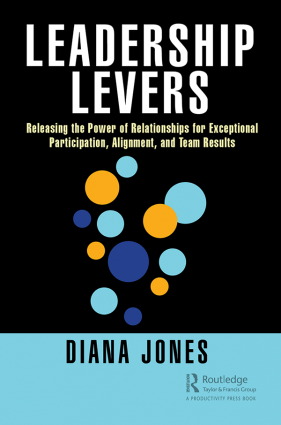
Covid has wreaked havoc with relationships; people have not been able to get together with those they choose. Leaders with weak or unhelpful relationships have resulted in losing valuable staff. Online meetings have emphatically drawn leaders’ formerly personal and private lives into the professional realm (hello zoom-bombing pets and children). The need for quality human connection and social cohesion in our organizations has never been stronger. Fortunately those two elements are strongly related.
What holds most leaders back, as if their foot is on the relationship brake, means they fail to engage and gain alignment. Up until now, leaders rarely recognized that shaping group behaviour is describable as a process, which they can learn. Instead they unconsciously fall into relationship patterns influenced by either early family experiences or being lead themselves.
A new leadership model is required
Informal relationship patterns within their organization have a dramatic effect on results, which is why birds in flight manage to alter course without bumping into each other. Relationships and collaboration are primarily a matter of principles and process and not personality and content.
Leaders can learn to mine the brilliance that already lies within their organizations if they learn to refresh and re-generate new patterns of informal and personal relationships relevant to their business. What have previously been private and personal conversations are now central to implementing new strategies, products and services.
But here is the truth.
Just as crucial to the formal organization hierarchy, are the informal work relationships among executives and staff throughout the organization. Relationship which cut across the formal lines of decision and authority–the human bonds based on shared personal experience and values than job title. These informal relationships networks form the life blood of every organization; who people listen to, who understands what is going on, who they confide in when the going gets tough, and who looks out for them. Pre-covid, these connections formed at coffee machines, social events, and team dinners as people privately shared personal stories of their hopes, their cares, and what and who are important in their lives and discovered significant connections.
Three ways to stimulate human bonds for organization cohesion.
1. Kick start newcomer’s entry
2. Forming new groups and refreshing existing groups
3. Shift meeting preparation from focusing on content, to focus on making it easy for people to contribute.
1. Kick start newcomers entry
With special purpose teams as well as business as usual, leaders can simply ensure new appointees are successfully and rapidly inducted into their leadership team, the business group, and the organization by personally introducing and making clear:
• Their name and role
• The main impacts the leader wants the person to have
• The reason why they chose this person
• Three or four qualities or experiences the leader knows the individual brings to the organization
• The results they want from their appointment
• How they want the team to work with this person
This format ensures the best entry and rapid acceptance of any newcomer. Hearing the leader’s reasons for their choice clarifies the vision for both the role and the individual involved. Leaders who overlook or avoid this process watch informal connections emerge based on nebulous pecking orders. The integration of any new people becomes haphazard and the chance for rapid alignment is lost.
2. Powerful personal introductions for new groups
Special purpose teams are the new norm. When participants know who is at the table, or on the zoom call, and the experiences they bring, fresh conversations thrive. Leaders can generate these in their everyday interactions. One or some of the following introduction invitations generate working relationships rapidly:
• One of the experiences they have had that draws them to wanting to improve the team/company
• 3 – 4 qualities they bring to their work
• An experience that motivates them to contribute to x
• 1 – 2 people or groups who have been influential in how they lead
Each of these invitations require self-disclosure, which in turn rapidly increases the group’s knowledge about one another, and enables group members to make interpersonal connections based on their own experience. Working in this way deepens the level of sincerity of discussions and the level of collegial intimacy, while increasing participant’s commitment to get to the heart of the matter.
Leaders can create their own password to Aladdin’s cave and hear for themselves the gems group members bring. For this to work the content of these conversations remain private to participants.
3. Shift your meeting focus to helping people participate.
How many meetings have you left feeling unsatisfied? You are not alone. We have people, a room or zoom to meet in, a start time, and an agenda. What could possibly go wrong? None of those things is wrong. They are all essential, but they are just not enough. These elements provide the infrastructure, but they don’t take into account that people and their interactions are central to productivity and success.
It is a simple truth that leaders are not taught how to lead groups, and unsurprisingly, without simple structures and invitations, people don’t know how to participate. These dynamics create the perfect storm from criticism and disengagement.
Leaders, don’t focus preparation on content, focus on what your audience needs to make decisions and take action. If you want to lead and implement change, creating simple processes for people to participate with their experience and expertise is essential.
Leaders can no longer avoid the soft side of relationships. In fact, as we return from covid restrictions, regenerating relationships need to be front and centre of every leader’s interactions.
There is all this and more in Diana Jones, new book Leadership Levers: Releasing the power of Relationships for Exceptional Participation, Alignment, and Team Results, Routledge 2022.

Diana Jones is a Wellington based leadership advisor, executive coach, and author of Leadership Material and Leaders Levers.
Copies of Diana’s book are on order for the Wellington City Libraries collection. Library members can reserve a copy for free by clicking on the reserve option of the record and selecting which branch of the library to collect the item from when it is ready. Leadership Levers: Releasing the power of Relationships for Exceptional Participation, Alignment, and Team Results,
An eBook copy is available for downloading via the Libby app. Library registration is required to access it.
Copies of Diana’s earlier book are available in the library collection.
Leadership material : how personal experience shapes executive presence / Jones, Diana
“Often viewed as intangible and invisible, most leaders take great care to separate their personal qualities from their professional identity. Jones, an executive coach to leaders for 30 years, argues that this is unwise. In fact the ‘soft side’ of leadership – empathy, compassion, and authentic communication – is derived from personal experience, and are both powerful and essential to inspiring others and achieving results”–Back cover.” (Catalogue)
If you need more information please contact the Prosearch team at the library. We can help you find information across a range of perspectives and resources. All enquiries are treated in confidence.


